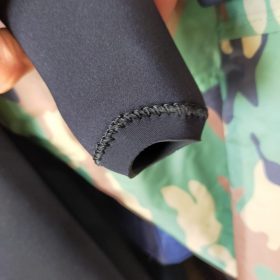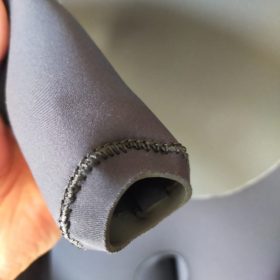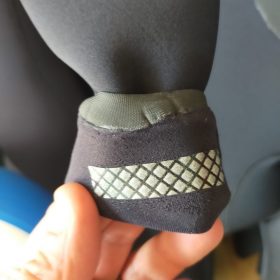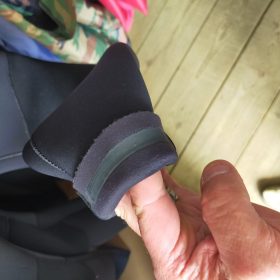It’s safe to say North Coast Wetsuits knows its onions when it comes to surfing. Whilst we do other watersports (and some on land) surfing’s our roots, where we come from and one of the reasons we’re based down in Cornwall, a stone’s throw from some premier surfing real estate.
Surfing continues to grow and attract newcomers every year – although nothing quite like we saw in 2020. As 2021 rolls on we’re likely on for another spurt this year.
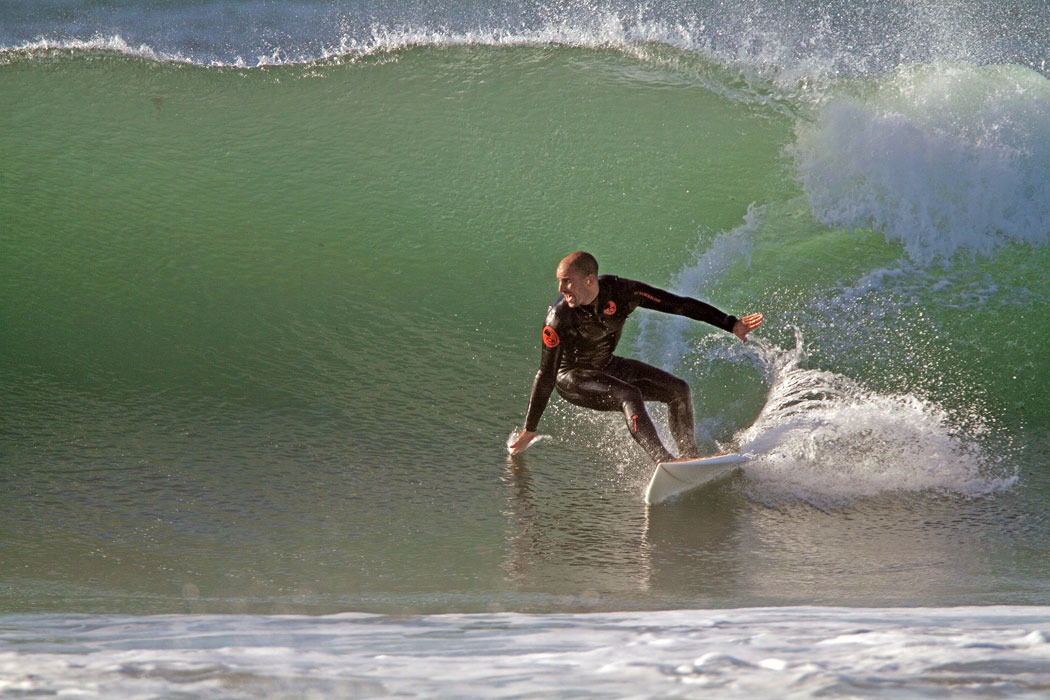
With each new influx of surfers similar teething problems emerge. The North Coast Wetsuits Beginner Guide to Surfing is therefore designed to help you on your journey and steer you along the correct path from the get go.
Get a surfing lesson (or lessons).
Any newbie can go it alone and learn ‘the trade’ without instruction – but it’ll take much longer. There’s no substitute, however, for getting a lesson. An experienced, qualified, surfing instructor will be able to pass on valuable skills, knowledge and guide the beginner to where he/she needs to be much quicker.
Having a handful of surfing lessons you’ll be ready to tackle those waves without supervision. Although, coaching at all levels is a good idea from time to time as plateaus can often be longwinded to get over.
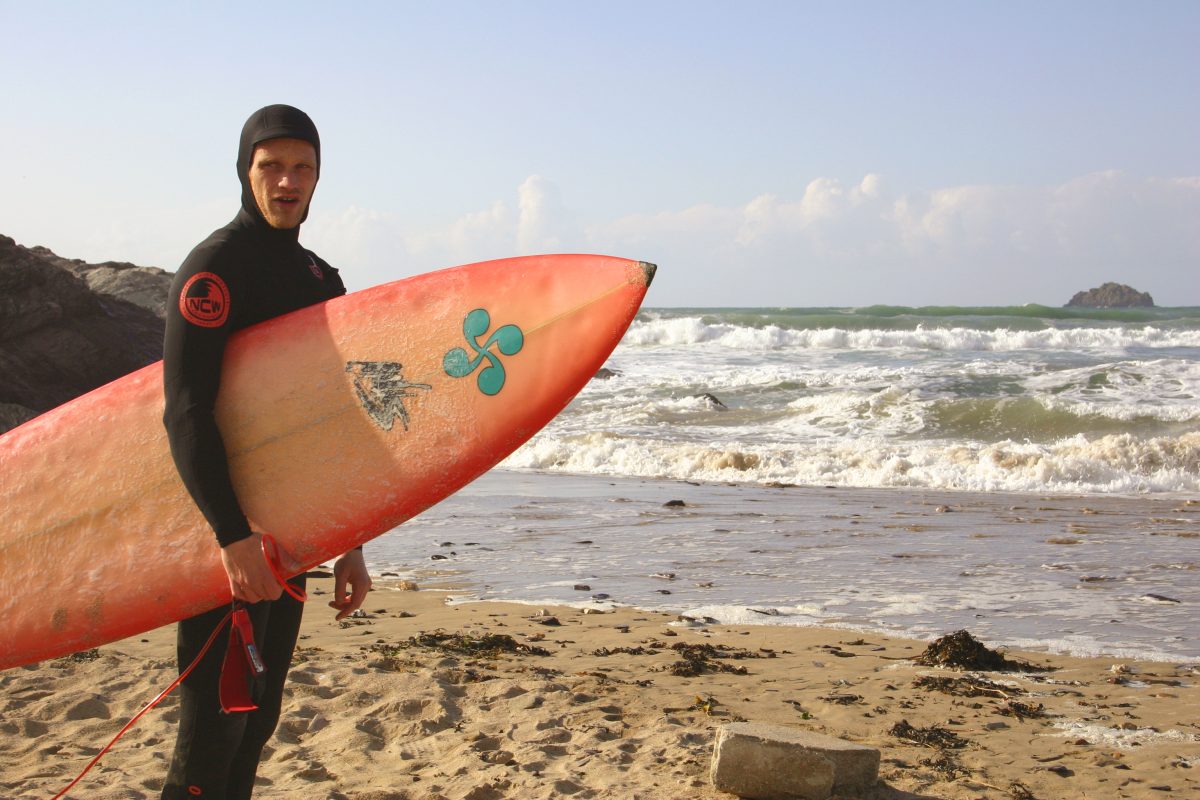
The humble foam surfboard.
Ahhh the foamie: seemingly a lowly piece of surfing equipment but actually, in many situations, the best choice of board for the conditions on hand. And a foamie isn’t just good for beginner surfers either. We know many a season wave shredder who busts out the foam sled for some cruisey wave sliding.
Foam surfboards are floaty, wide and forgiving. Plus, being made out of foam ensures they’re much more resistant to dings than your regular surf shred machine. For a good deal of surfers a foamie is the go to platform as it just works. After all, the best surfer in the water is the one having the most amount of fun. And foam surfboards sure deliver on that promise!
Choosing your first proper surfboard.
With a good number of surfing sessions under your belt it could be time to choose your bona fide first surfboard proper. (Although taking the above foamie paragraph into account it may be one these is it!).
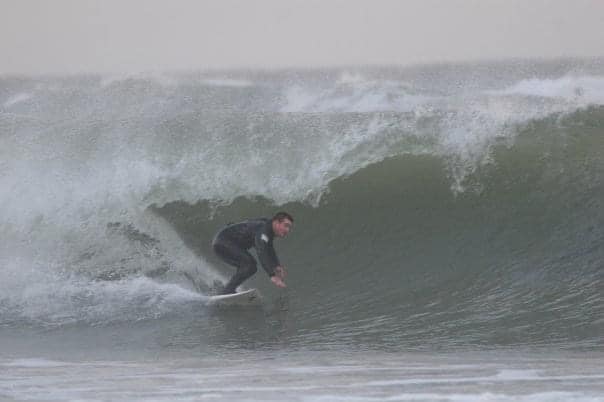
That said it’s still worth owning a well made, quality surfboard if you plan on getting seriously into surfing. Well, as serious as it should be; surfing’s a fun pastime after all.
There’s lots of surfboard buying info available if you search online. Yet time and again wave riders succumb to marketing hype and social media big ups. Whilst that shiny white rip ‘n’ tear toothpick is devasting in the hands of a seasoned rider it’ll serve you no good having only just stomped the basics. What you need is something that works for your level in the type of waves you’ll mostly be surfing with some progression built in for additional longevity.
Don’t be afraid to go longer. Longboards, mid lengths and mals are all worth your time and cash. Length equates to glide which makes getting out back, beyond the foam, easier as well as actually picking up your chosen wave. Ample volume and width are also considerations. You need to feel comfortable as comfort helps build confidence which in turn knocks on to skills development. Forget the shortboard and choose something dobale. Biggest tip is go to a reputable surf shop or speak to a proper surfboard shaper. They’ll guide you correctly and make sure you end up with a stick that suits.
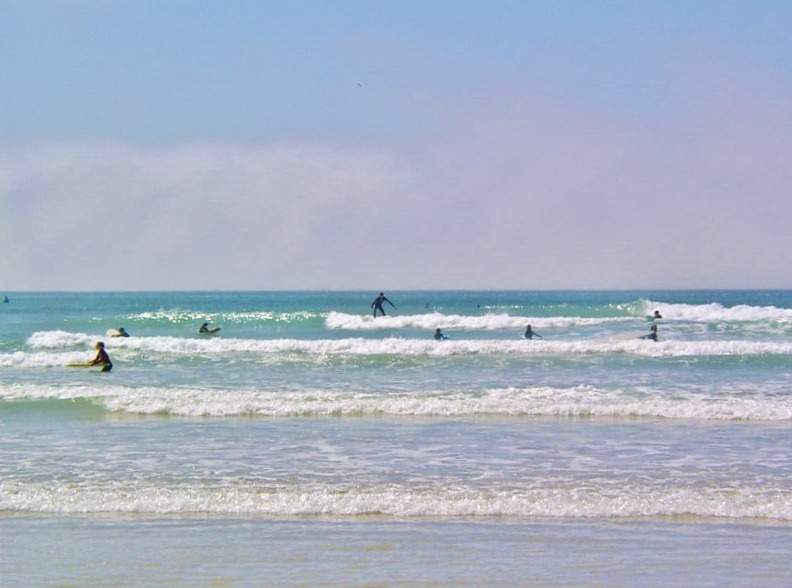
Wetsuits for surfing.
As with surfboards it’s important to choose a wetsuit that suits your surfing wants/needs. How often do plan on getting wet for instance? And will be you riding right through the seasons or just sticking to fairer weather months. Also, would you be using your wetty for other sports?
There are tons of wetsuit brands out there, all telling how good their gear is. A lot is quality but there’s also a good deal of rubber that isn’t fit for purpose or doesn’t suit the UK climate.
Whichever way you look at it our weather is changeable and the sea generally cold. It ain’t the tropics! Even in summer water temperatures can be low ish. If you’re not used to this then it may (literally) come as a shock.
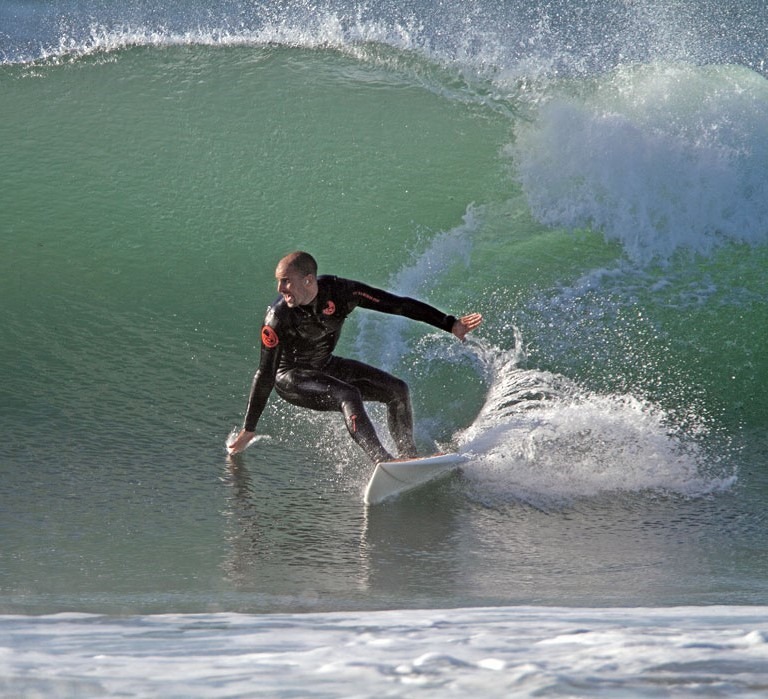
5/3mm chest zip Gulf Stream Yamamoto neoprene winter wetsuit (men).
All sizes in stock of North Coast Wetsuits Gulf Stream front entry / mini chest zip 5/3mm winter wetsuit steamer. Updated for additional performance.
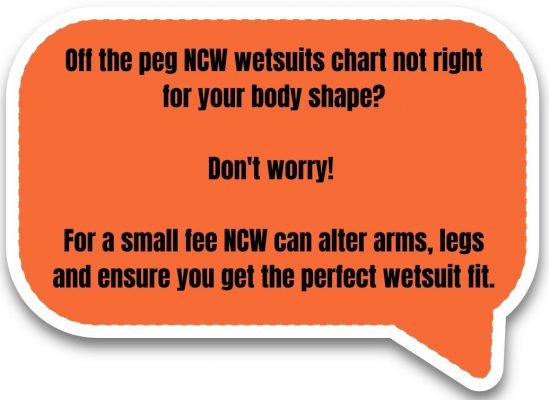
NCW’s 5/3mm winter chest zip streamer wetsuits been very popular for a number of years and now come with some new features:
- Now built with Yamamoto 100% lightweight high stretch limestone neoprene which is more eco friendly.
- Double glued and double blind stitched seams.
- Fully taped internal seams.
- Chest and back panels feature durable anti wind chill finemesh neoprene exterior and plush lined heat holding insulative interior.
- Interior lining made with low water absorption materials for quick drying.
- Anti-flush envelope overhead entry system.
- Tape and liquid welded reinforced overhead seam closures.
- Snug fit anti-flush wrists with internal silicon grip tape.
- Rubberised anti-flush neck lining.
- DuraFlex reinforced kneepads.
- High quality YKK metal zip.
- Anatomical suit shaping.
- Our new neoprene blend is more scratch / snag / velcro hook resistance than standard neoprene.
This wetsuit will keep you amazingly warm in the coldest waters, such as the UK and Northern Europe. It works well for surfing, stand up paddle boarding, windsurfing, kitesurfing, siton kayaking and a whole host of other watersports. We get a lot of recommendations from wild and open water swimmers that find this suit really flexible to swim in and durable too, take a look at our wild swimming knowledge page here. If you’re looking for performance, quality and a product that won’t let you down the NCW Gulf Stream 5/3mm winter wetsuit is just the ticket.
Check out the review from SUP Mag UK HERE
A note on ankle and wrist seams. All seams are snug fitting and prevent flush. Silicone anti slip stops riding up.
Size guide below. For any sizing questions get in touch.
|
Size |
Height |
Chest |
Waist |
Hips |
|
Extra Small |
5’2″-5’4″ |
32″ – 34” |
25″-27″ |
30″-33″ |
|
Small |
5’4″-5’7″ |
34″-36″ |
27″-29″ |
32″-34″ |
|
Small Tall |
5’8″- 6′ |
34″-36″ |
27″-29″ |
32″-34″ |
|
Medium Small |
5’6″-5’9″ |
36″-38″ |
29″-31″ |
32″-34″ |
|
Medium Small Tall |
5’10”-6’4″ |
36″-38″ |
29″-32″ |
32″-34″ |
|
Medium Short |
5’4” – 5’7” |
38″-41″ |
31″-34″ |
35″-39″ |
|
Medium |
5’8″-5’10” |
38″-41″ |
31″-34″ |
35″-39″ |
|
Medium Tall |
5’11”-6’4″ |
38″-41″ |
32″-34″ |
36″-39″ |
|
Medium Large |
5’10”-6’4″ |
40″-44″ |
35″-37″ |
38″-41″ |
|
Large Short |
5’7″-5’11” |
42″-45″ |
35″-38″ |
40″-43″ |
|
Large |
6’0″-6’5″ |
42″-45″ |
35″-38″ |
40″-43″ |
|
Xtra Large |
6’2″-6’5″ |
44″-47″ |
37″-39″ |
42″-45″ |
|
Xtra Xtra Large |
6’2″-6’5″ |
46″-49″ |
39″-42″ |
44″-46″ |
Scroll down for more info.
Want to read our fair returns policy first?Surfing is an immersive sport. You’re actually in the drink more than up on the board. Paddling out through white water, sitting waiting for your set and bailing out certainly means you’ll be wet (surfing’s a watersport after all). It’s super easy to get a chill and in severe cases this lead on to more serious issues if you aren’t wearing the correct fitting and right thickness wetsuit. Here at NCW we have conversations with all manner of watersports people who all have different requirements. Generally speaking a surfing wetsuit should be tighter fitting and possibly on the thicker side for most months of the year. At the peak of summer you may need something thinner but chances are your heavier duty rubber will be your most used. Feel free to get in touch with us here at North Coast Wetsuits to discuss your requirements. We’d rather get you kitted out correctly, first time round, than have disgruntled surfers in the line up!
Types of surfing waves and locations.
Surf breaks all around the country are now busier than ever. As we said earlier in this article surfing, as with other outdoor recreational activities, has seen considerable growth in recent times. With staycationing back on the cards we’re pretty sure those headline spots will be bombed out again at prime times.
As a beginner/improving surfer you ideally want room to move and make mistakes. A softer breaking, smaller wave will be the go with your chosen beach being wide open and of the sand variety. Unfortunately, this means those headline locations are probably your best bet.
Avoiding crowds can still be achieved, however. Heading for a surf during quieter times – such as earlier morning and later in the evening – should less people in the brine. Some beaches see the ‘pack’ congregate in a certain area, leaving further down the line much quieter. If it requires a little walk to access not as a hectic a take off then do it. Just make sure there’s not a safety reason everybody’s jammed into a small take off zone such as river mouth.
Surfing safety.
Lastly, for all watersports peeps (not just surfers), safety should be paramount. Know your limits first off! Don’t go all kamikaze and try an take on double overhead death bombs if you ain’t got the skills. Best to sit it out during these periods.
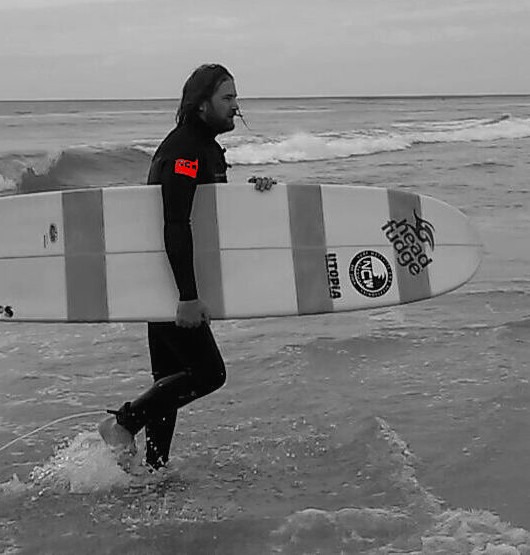
Understand your surfing environment – tides, rips, weather, how waves form and where they’re most likely to break. There’s a lot of knowledge to glean as a surfer so start genning up! The more info you have the better your overall experience will be. If you need to ask questions of more experienced riders then do so. Again, surf coaches are a great source of surfing info. Know your surf etiquette and try and stick to the rules. If you do accidentally drop in then apologise to the surfer whose wave you scuppered. Most are easy going and understand mistakes happen.
Have fun! Don’t get caught up in the ‘show pony’ or agroville realms some surfers inhabit. Surfing is simply about enjoying the outdoors, ocean and getting stoked.
Let us know if you have any questions about any part of surfing. We’ll try and answer and are only too happy to help.
Check out more NCW Surfing Knowledge via the following link –


